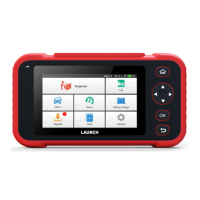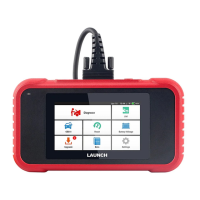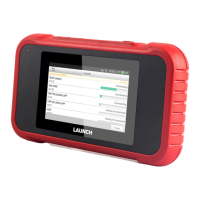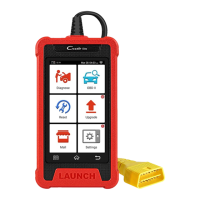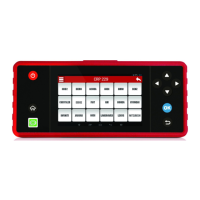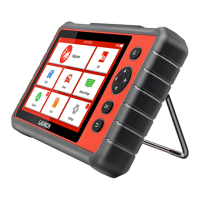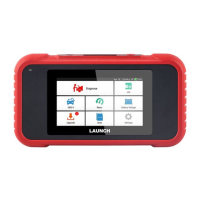Do you have a question about the Launch Creader Professional 129X and is the answer not in the manual?
| Operating Voltage | 12V |
|---|---|
| Connectivity | USB |
| Supported Protocols | OBDII, EOBD, J1979 |
| Weight | 0.5kg |
| Operating Temperature | -10°C to 50°C |
| Storage Temperature | -20°C to 70°C |
Essential safety precautions to prevent injury and damage when working on a vehicle.
Automatic vehicle detection and report generation.
Manual diagnostic functions including version info, DTCs, and data stream.
Support for 10 modes of OBD II tests for emissions and system monitoring.
Maintenance functions like Oil lamp reset and parking brake reset (129i only).
Describes the location and function of the Data Link Connector (DLC).
Explains how the OBD II system indicates component testing status.
Guide to the initial setup and first-time use of the diagnostic tool.
Instructions on how to charge the diagnostic tool.
Steps to perform system settings and initial configuration.
Description of the main function modules available in the Job Menu.
Configures the tool for professional diagnostic operations.
Quick access to the I/M Readiness function for emissions testing.
Quick way to check DTCs, diagnose emission-related issues, and verify repairs.
Performs common repair and maintenance items like Oil lamp reset.
Instructions on how to connect and perform diagnosis on a vehicle.
Steps for connecting the tool to the vehicle's DLC.
Function for diagnosing electronic control systems of single vehicle models.
Initiates auto-detection of vehicle systems after connection.
Procedure for performing vehicle diagnosis manually when VIN information is unavailable.
Quickly accesses ECUs and generates a vehicle health report.
Manually select the test system and function step by step.
Reads system mode, vehicle VIN, software, and ECU version information.
Displays detailed information of DTC records retrieved from the vehicle's control system.
Erases diagnostic trouble codes after repairs are completed.
Retrieves and displays live data and parameters from the vehicle's ECU.
Captures operating conditions at the time of an emission-related fault.
Checks DTCs, diagnoses emission issues, and verifies repairs.
Identifies the emission control system section that has malfunctioned.
Retrieves and displays live data and parameters from the vehicle's ECU.
